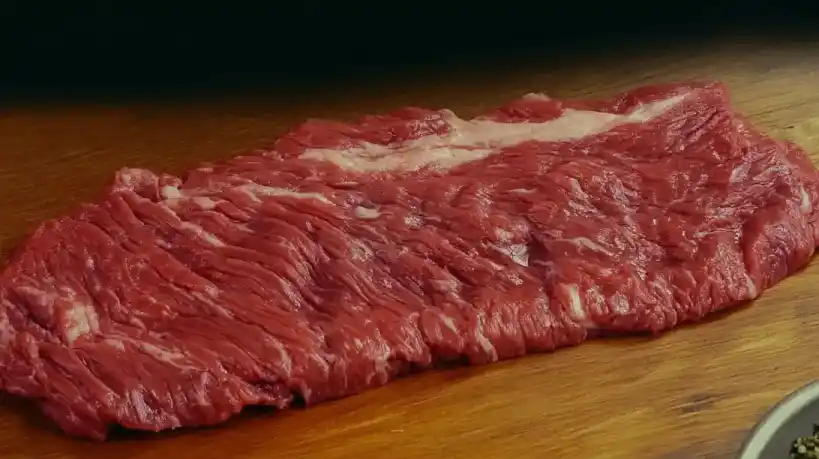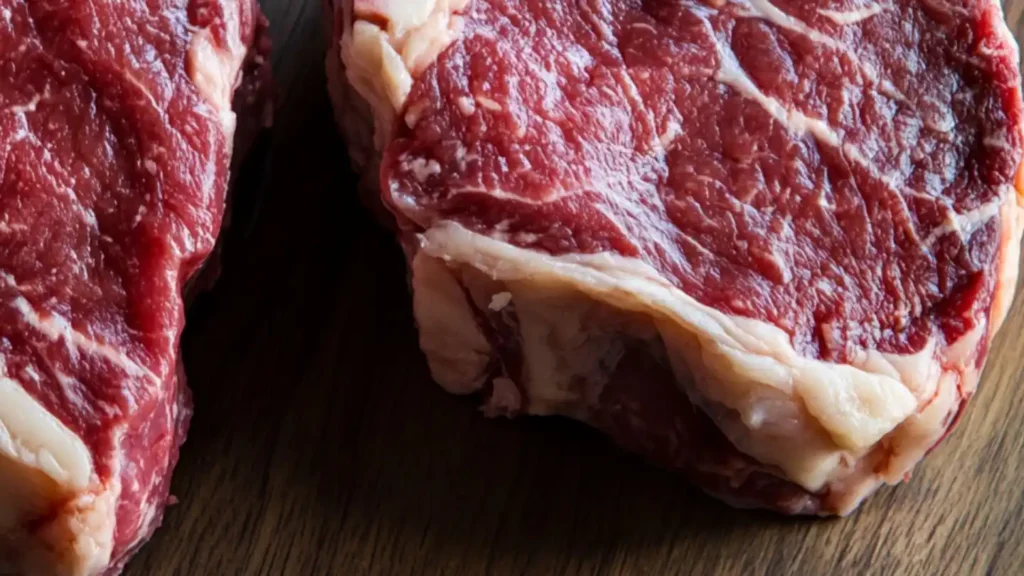The Best Fluffy Pancakes recipe you will fall in love with. Full of tips and tricks to help you make the best pancakes.

When it comes to making the perfect steak quesadilla, choosing the right cut of beef is just as important as selecting the best cheese or tortilla. Some steak cuts are tender, juicy, and flavorful, while others can turn chewy or dry when cooked improperly. But which one is the best for quesadillas?
In this guide, we’ll break down the best steak cuts, how to cook them properly, and what makes them work so well inside a crispy, cheesy quesadilla.
Table of Contents
Best Cuts of Steak for Quesadillas
1. Flank Steak – The Most Popular Choice
Flank steak is one of the best cuts for quesadillas because:
✔️ It has a rich, beefy flavor
✔️ It is lean but tender when cooked properly
✔️ It absorbs marinades beautifully
✔️ It can be sliced thinly against the grain for the perfect texture

How to Cook It:
- Marinate it for at least 30 minutes to enhance tenderness.
- Grill or pan-sear it over high heat for medium-rare to medium doneness.
- Let it rest before slicing against the grain to prevent toughness.
🔗 Internal Link: Want to see flank steak in action? Check out our Steak Quesadilla Recipe.

2. Skirt Steak – Best for Authentic Mexican Flavor
Skirt steak is a thin, long cut that is extremely popular in Mexican cuisine. It has:
✔️ Intense beefy flavor
✔️ A loose grain that makes it perfect for absorbing marinades
✔️ Slight chewiness that adds texture to quesadillas

How to Cook It:
- Marinate for at least 1 hour for the best results.
- Sear quickly over high heat (about 2-3 minutes per side).
- Cut against the grain to make it more tender.
🔗 Internal Link: Pair your steak with the Best Melting Cheese for Quesadillas for the ultimate combo.

3. Ribeye – Best for Juiciness and Fat Content
Ribeye is one of the most flavorful and tender cuts due to its high-fat content. It works great in quesadillas because:
✔️ It has rich marbling for extra juiciness
✔️ It remains tender even when cooked to medium
✔️ It delivers a melt-in-your-mouth texture

How to Cook It:
- Season simply with salt and pepper to let the flavor shine.
- Sear on a hot pan for 3-4 minutes per side.
- Let it rest before slicing thinly.
🔗 Internal Link: Curious about other steak choices? Check out Best Steak for Quesadillas.
How to Prepare Steak for Quesadillas
- Marinate for Flavor & Tenderness
- Use a blend of lime juice, garlic, cumin, and olive oil.
- Let the steak sit for 30 minutes to 2 hours for best results.
- Cook It Properly
- Use high heat for a quick sear.
- Avoid overcooking—medium-rare to medium is best.
- Slice It the Right Way
- Always cut against the grain to keep the steak tender.
Steak vs. Other Quesadilla Fillings: Which One Wins?
- Chicken Quesadillas – Great for a lighter, milder option.
- Cheese-Only Quesadillas – Classic but lacks protein.
- Shrimp Quesadillas – Unique seafood twist, but steak remains the king of bold flavors.
🔗 Internal Link: Want to explore more fillings? Check out What Goes Well Inside a Quesadilla?
How Different Cooking Methods Affect Steak for Quesadillas
The way you cook your steak drastically impacts its flavor and texture. Here’s a breakdown of popular cooking methods:
- Grilling: Enhances smokiness and natural juices. Best for flank steak and ribeye.
- Pan-Searing: Creates a crusty exterior while locking in moisture. Perfect for skirt and sirloin steaks.
- Slow-Cooking: Ideal for tougher cuts like chuck or brisket, but not the best for quick quesadillas.
- Sous Vide: Keeps steak ultra-tender but requires extra time and finishing in a hot pan.
🔗 Internal Link: Want more cooking inspiration? Check out Mastering Easy Dinner Recipes.
Best Seasonings and Marinades for Quesadilla Steak
To make your steak burst with flavor, use these seasonings and marinades:
Best Dry Seasonings:
✔️ Salt & Black Pepper – Enhances natural beef flavor
✔️ Garlic Powder & Onion Powder – Adds depth
✔️ Smoked Paprika & Cumin – Infuses warmth and smokiness
Best Marinades:
✔️ Lime Juice & Olive Oil – Tenderizes and adds freshness
✔️ Soy Sauce & Worcestershire Sauce – Boosts umami
✔️ Chipotle Peppers & Adobo Sauce – Provides a smoky, spicy kick
🔗 Internal Link: Need a great spice mix? Try Chicken Taco Seasoning—it works on steak, too!
Where to Buy the Best Steak for Quesadillas
Not all grocery stores label steak the same way. Here’s where to find the best cuts:
- Flank Steak: Often labeled London Broil in stores
- Skirt Steak: Found in the butcher section
- Ribeye & Sirloin: Easily available in most supermarkets
- Butcher Shops & Farmers’ Markets: Offer higher-quality beef
🔗 Internal Link: Not sure what to look for? Read What is Flank Steak Called at the Grocery Store?
Best Cheese Pairings for Steak Quesadillas
Choosing the right cheese is crucial. Here are the best options:
✔️ Oaxaca Cheese – The most authentic choice, melts beautifully
✔️ Monterey Jack – Mild, creamy, and gooey
✔️ Cheddar – Sharp and flavorful
✔️ Queso Asadero – Mexican melting cheese
🔗 Internal Link: Want more cheese recommendations? Read Best Melting Cheese for Quesadillas.
Common Mistakes to Avoid When Cooking Steak for Quesadillas
Even seasoned cooks make these mistakes:
❌ Overcooking: Leads to dry, chewy steak
❌ Skipping the Marinade: Reduces tenderness and flavor
❌ Not Slicing Against the Grain: Makes steak tough
❌ Using Low-Quality Cheese: Results in a lackluster quesadilla
🔗 Internal Link: Avoid quesadilla disasters—see What Goes Well Inside a Quesadilla?.
Can You Use Leftover Steak for Quesadillas?
Absolutely! In fact, leftover steak works great in quesadillas because:
✔️ It reheats quickly without drying out
✔️ It’s already seasoned, saving time
✔️ It develops more flavor after sitting overnight
🔗 Internal Link: Need more meal hacks? Read What is the Hack on the Steak Quesadilla Recipe at Chipotle?
Vegetarian Alternatives to Steak Quesadillas
Not eating beef? Try these delicious meat-free alternatives:
✔️ Mushroom Quesadillas – Meaty texture with umami
✔️ Jackfruit Quesadillas – Shredded, BBQ-style filling
✔️ Black Bean & Sweet Potato – Sweet, smoky, and nutritious
🔗 Internal Link: Love plant-based meals? Try Ultimate Guide to Potato Tacos.
Are Quesadillas Healthier with Steak or Chicken?
Both options are delicious, but here’s how they compare:
| Steak | Chicken |
|---|---|
| More iron & B12 | Lower in fat & calories |
| Rich, beefy taste | Milder flavor |
| Higher protein content | Leaner option |
For flavor, steak wins. For lighter meals, chicken is better.
Best Sides to Serve with Steak Quesadillas
Pair your quesadilla with these tasty sides:
✔️ Salsa Roja – Classic tomato-based salsa
✔️ Mexican Street Corn – Sweet and smoky
✔️ Guacamole – Creamy, fresh balance to rich steak
✔️ Pico de Gallo – Adds a zesty kick
🔗 Internal Link: Try our Salsa Roja Recipe Guide for a homemade topping!
Can You Make Steak Quesadillas in an Air Fryer?
Yes! An air fryer makes them extra crispy:
✔️ Preheat to 375°F (190°C)
✔️ Lightly spray quesadillas with oil
✔️ Cook for 5-7 minutes until golden brown
FAQs About Best Steak For Quesadillas
What’s the best budget-friendly steak for quesadillas?
Flank steak is the best affordable option because it’s lean, flavorful, and tender when cooked properly.
Should I use fresh or leftover steak for quesadillas?
Both work! Leftover steak is great for quick quesadillas, but freshly cooked steak gives the best texture and flavor.
Do I need to marinate the steak?
Yes, marinating enhances tenderness and flavor. Use lime juice, olive oil, and spices for a simple yet delicious marinade.
Can I use ground beef instead of steak?
Yes, but the texture and flavor will be different. Ground beef is softer, while steak gives that authentic, meaty bite.
What’s the best way to reheat steak quesadillas?
Use a skillet over medium heat for the crispiest results. Avoid the microwave, as it can make the tortilla soggy.
Conclusion About Best Steak For Quesadillas
Choosing the right steak can make or break your quesadilla experience. Whether you go with flank steak, skirt steak, or ribeye, the key is to cook it properly, slice it thinly, and pair it with the right cheese.
For more delicious quesadilla tips, check out our Steak Quesadilla Recipe and explore the best ingredients for the perfect bite! 🌮🔥









